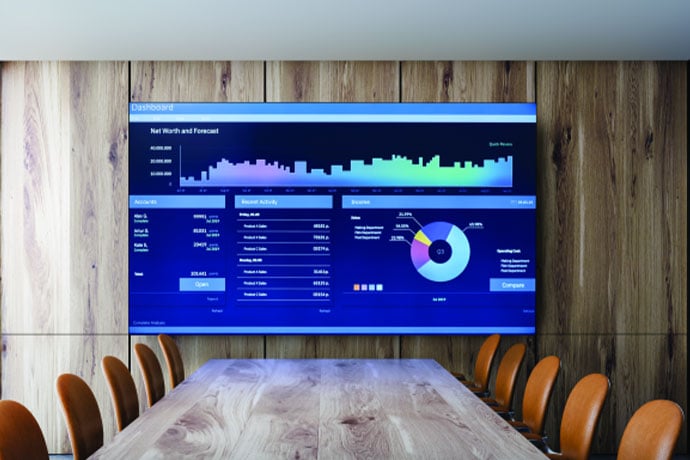A Q&A between AVI-SPL and Christie
AVI-SPL’s Nancy Lussier, director of campaigns and content, and Christie’s Marc Lemieux, principal architect, display technology, recently talked about LED display technology and trends for AVI-SPL’s video podcast “The Collaboration Space”.
The evolution of LED display technology
Marc explains that LED is actually an “old technology” that first appeared in 1962. The early 90s brought primitive monochrome displays – like those once found in sports stadiums and on billboards — followed by full color. And in the past two decades, we’ve seen improvements including higher pixel density and improved resolution.

Why choose an LED display?
With its high brightness and wide color gamut, LED creates an impactful video wall display, says Marc. It’s seamless, unlike LCD displays, and runs 100,000 hours to half brightness – that’s almost 11 and a half years, running 24 hours a day.
Marc notes that LED technology changes quickly and selecting a video wall solution that can be upgraded over time can protect your investment.
“Christie MicroTiles® LED is designed as a platform,” says Marc. “We designed it this way with the intention that MicroTiles LED would evolve as the technology evolves. And that’s exactly what’s happened. We launched [MicroTiles LED] in 2019 with 1.25 and 1.5mm pixel pitches and we just launched a 0.75mm pitch that’s half the power with twice the brightness [of the LED tiles introduced in 2019].”
You can install the new pixel pitch alongside or replace MicroTiles with different pixel pitches while using the same QuickMount™ system.

What’s ahead for LED?
“MicroLED is probably three years out,” says Marc. And he also calls out chip-on-glass (COG) as another technology to watch. “It allows you to deposit small chips on glass. COG retains a really tight tolerance and it’s not susceptible to thermal expansion, so you can have highly dense LEDs. COG also makes the technology more viable from a cost standpoint.”
LED is expensive and fragile, so durability is a major consideration. “LED is a pretty fragile technology because typically LEDs are exposed,” says Marc. “That’s when you consider things like encapsulation, which is basically a coating that protects the LED module.” We just introduced encapsulation on our 1.0mm pixel pitch of MicroTiles LED.
Trusted partner
Given the myriad of choices and the rapid evolution of LED technology, working with a trusted partner is crucial. AVI-SPL works closely with Christie and our engineers to help customers select, install, and maintain their LED walls.
For more information about LED video wall technology, check out Nancy and Marc’s video conversation here:
Or listen to their conversation on AVI-SPL’s “The Collaboration Space” podcast: https://collaboration.buzzsprout.com/



